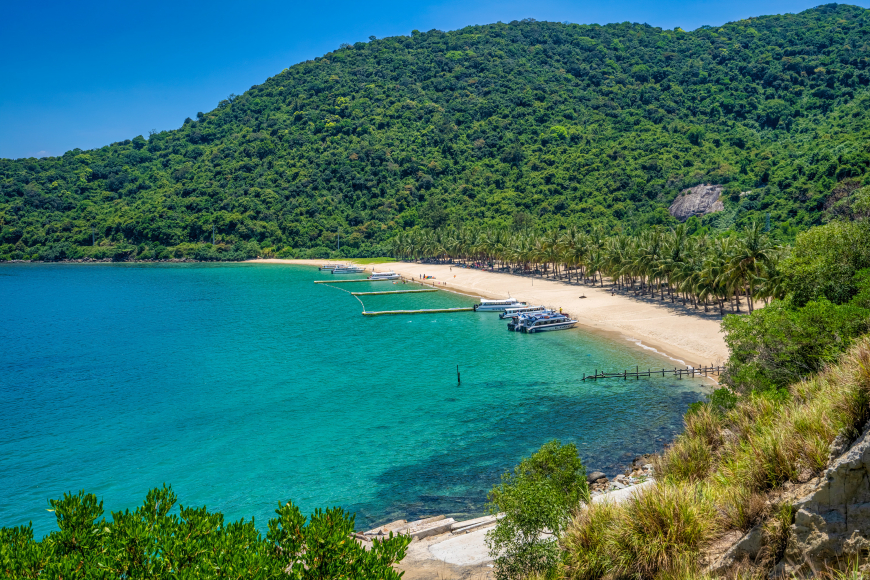The charming ‘yellow town’ is packed with history and full of opportunities to create magical memories. Here are the top suggestions for what to do when visiting…
With its old-world architecture, cobbled streets, and distinctive yellow shop fronts festooned with colorful lanterns, it’s no wonder Hội An’s considered one of the most beautiful places in all of Vietnam. In 2021, Hội An – a UNESCO world cultural heritage site since 1999 − was named Asia's Leading Cultural City Destination at the World Travel Awards. Yet there’s more to it than awards and postcard-perfect beauty. The town boasts a long history of drawing people from across the world.
Archaeological evidence suggests a trade in the region was happening as early as the second century BC. Hội An grew into a bustling trading port. During the Cham Dynasties (7th-10th centuries), it was an economic hub, where merchants from Asia, Persia, and Arabia traded. Later, the famed Silk Road maritime route saw ships from Europe start flocking to the port. From the 15th to 19th centuries, Hội An was a major Southeast Asian trading post. Here, goods were traded, and ideas and cultures were shared.
Today, tourism is the town’s major trade. But evidence of its fascinating history is everywhere. Wander any of its picturesque, pedestrian-friendly streets and you’ll see influences from a range of eras, places and cultures. And with its many shop-houses, it’s still considered a mecca for purchasing silk and other valued items.
Planning to visit Hội An? Here are some ideas to add to your itinerary…
MARVEL AT THE BEAUTY OF THE LANTERN FESTIVAL
Why is the lantern the most iconic symbol of Hội An? Ever since Chinese and Japanese traders introduced them hundreds of years ago, lanterns have always been hung – and made – here. For the most memorable trip (and most stunning photos), the best time to visit Hội An is during the lantern festival, held on the 14th day of every lunar month, when the moon is full. At night, the town reduces its electricity usage, so the candle-lit lanterns steal the show. Find a spot by the river, where lanterns are cast adrift to bring good luck. Or hop onto a boat and drop a lantern as you make a wish of your own.
TOP TIP: Go during the first festival of the Lunar New Year for the biggest celebration of them all.
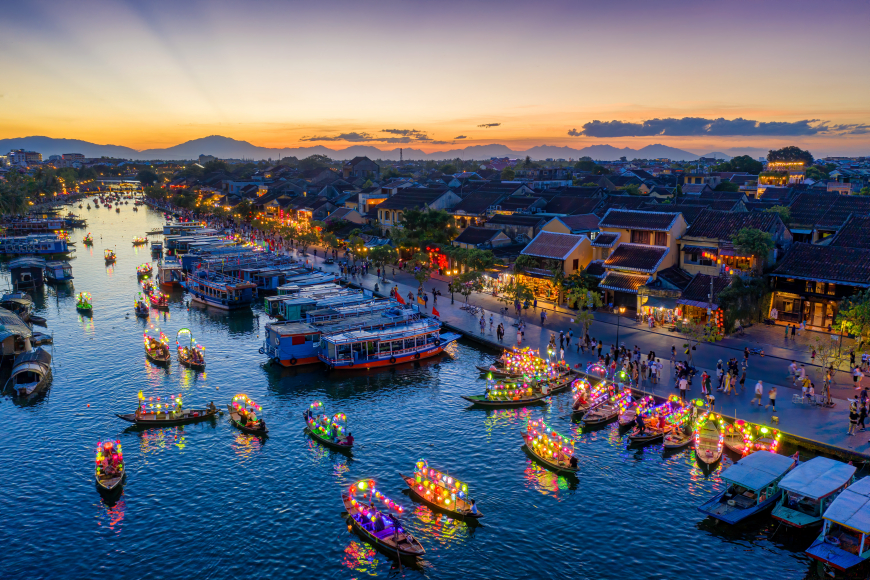
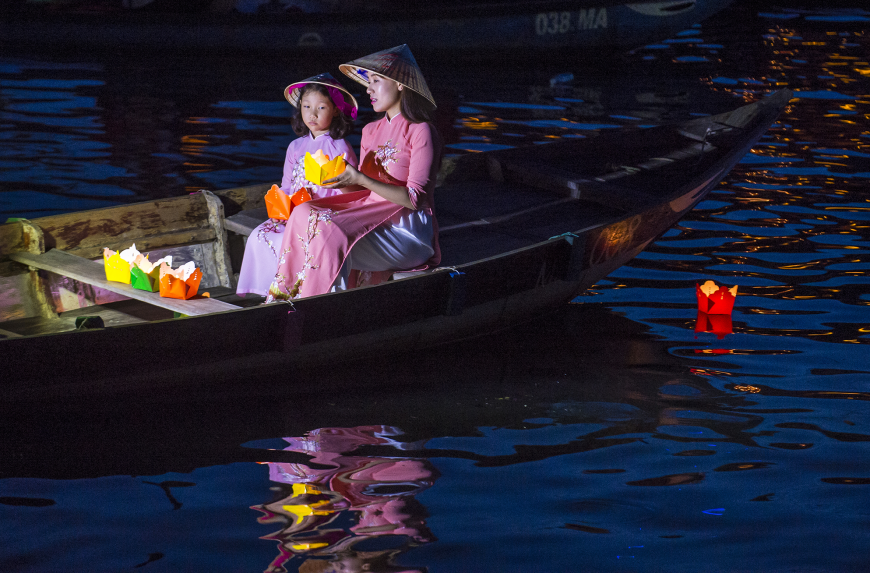
TAKE A BOAT TOUR
Given its estuary location, traditional boats are another distinctive feature of Hội An. The river that’s welcomed generations of trade is still a source of livelihood for many locals. A boat trip is a cooling, soothing way to experience the city from its waterways. The most popular choice is a sunset cruise on one of the sampans that line the riverside. Early birds should try a sunrise tour of the fish market on a traditional wooden boat. Help the fishermen returning offload their catch, ready to sell. For something different, hop into one of the quirky circular bamboo boats unique to Vietnam.
TOP TIP: Brave enough to take a bamboo boat for a spin? Stand up, keep your core steady … and be prepared to (potentially) get wet.
STROLL AROUND THE OLD TOWN
With its historical buildings and mix of European and Asian architectural styles, there’s plenty to admire on an unhurried walk through the ancient town. The original street grid plan remains as it was, and 844 of the 1107 buildings making up the townscape are on the UNESCO World Heritage list. So walking the streets of Hội An is like moving through a living museum. Give yourself enough time to stop for a ‘cà phê sữa đá’ (delicious Vietnamese iced coffee), enter a gallery, or shop for souvenirs.
TOP TIP: Buy an Old Town Ticket at the entrance to the old town to get entry into five of Hội An’s heritage buildings.
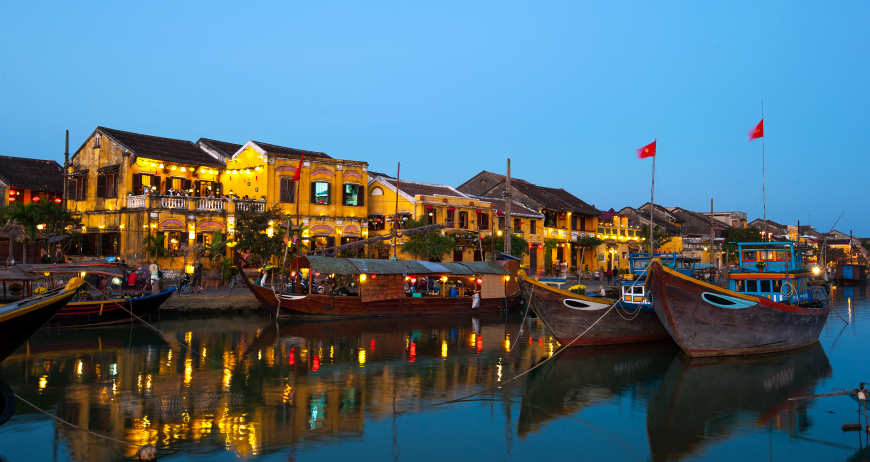
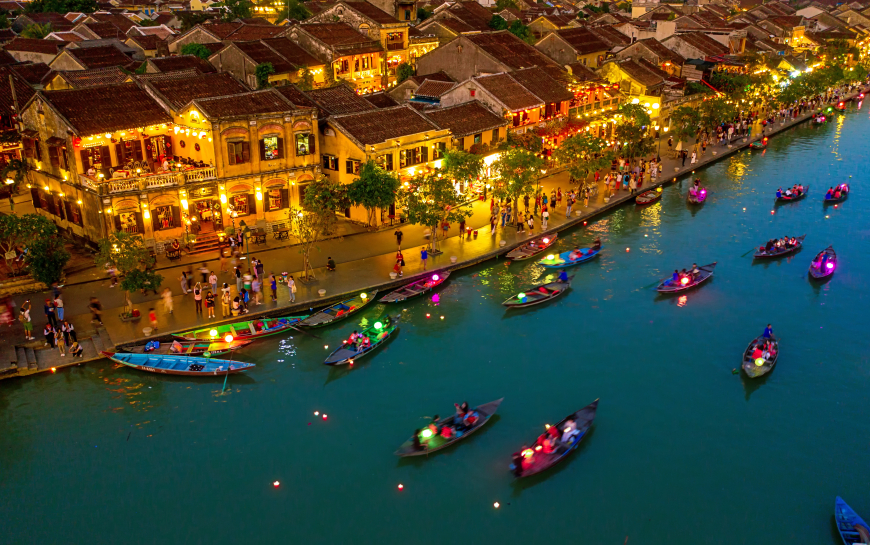
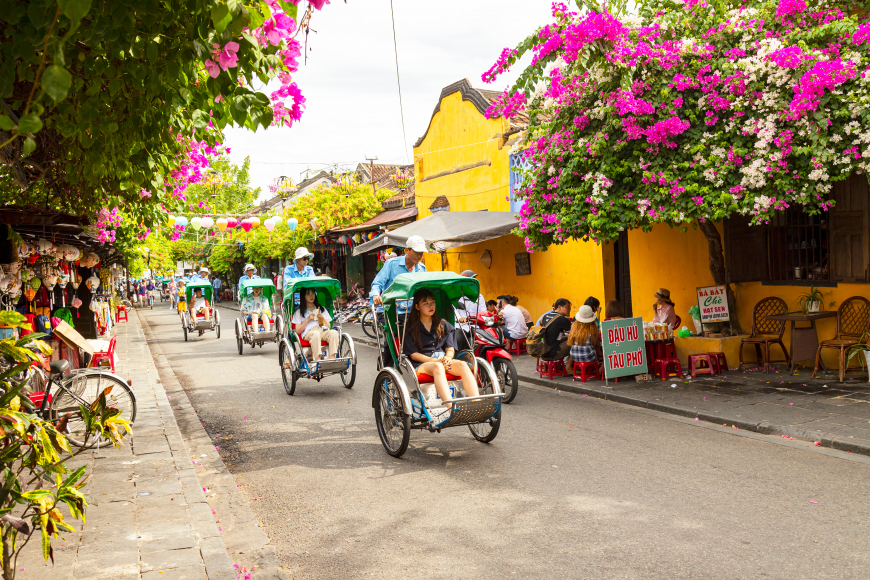
BUY FABRIC AND CUSTOM-MADE CLOTHES
Fabric, particularly silk, is woven into Hội An’s history. During Silk Road times, it was currency. Over time, many families took to selling fabrics or making garments. Now, Hội An is a hotspot for travelers wanting quality items tailor-made. For a sensory experience like no other, visit the Hội An Cloth Market. Here, at over 50 stalls stacked high with fabrics of all kinds and colours, sellers entice passers-by to buy. The experience can be overwhelming. So keep a cool head, and get ready to hone your bargaining skills. Looking for a gentler, more genteel experience? Visit one of the town’s many tailors. The cost of fabric is included, so you don’t have to source it yourself. And if it’s silk you’re after, head to the Hội An Silk Village.
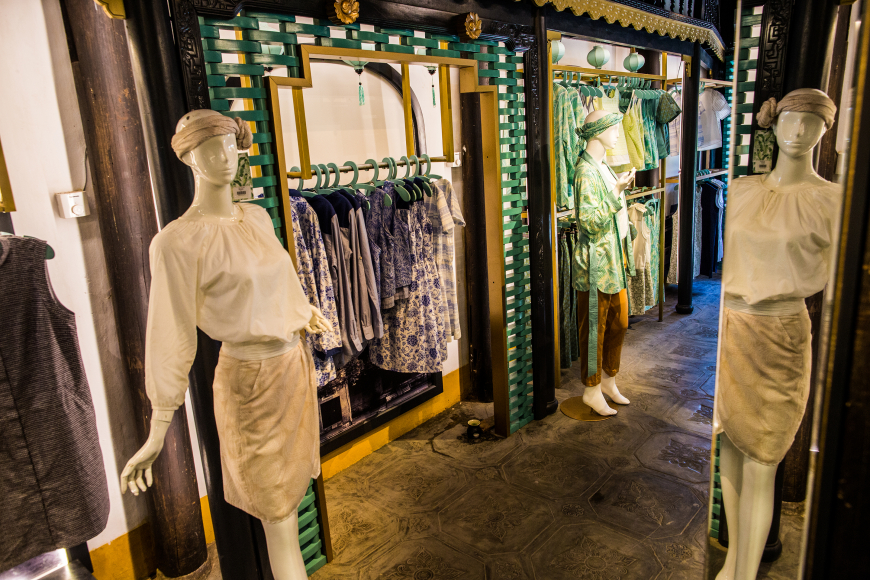
TOP TIP: Place your order early in your trip, so the tailors have enough time to make up your outfit.
VISIT THE JAPANESE COVERED BRIDGE
Back in the 15th century, Dutch, Chinese, Japanese, and Portuguese merchants began to settle around the port. As communities grew in different areas, so did their interactions. Around 1593, the Japanese built a bridge to link their neighborhood to the Chinese one. Some say the bridge was also meant to subdue Namazu, the mythical Japanese catfish creature believed to cause earthquakes. All these years later, the Japanese Covered Bridge still stands strong. The landmark even features on the 20,000 VND banknote – that’s how significant it is.
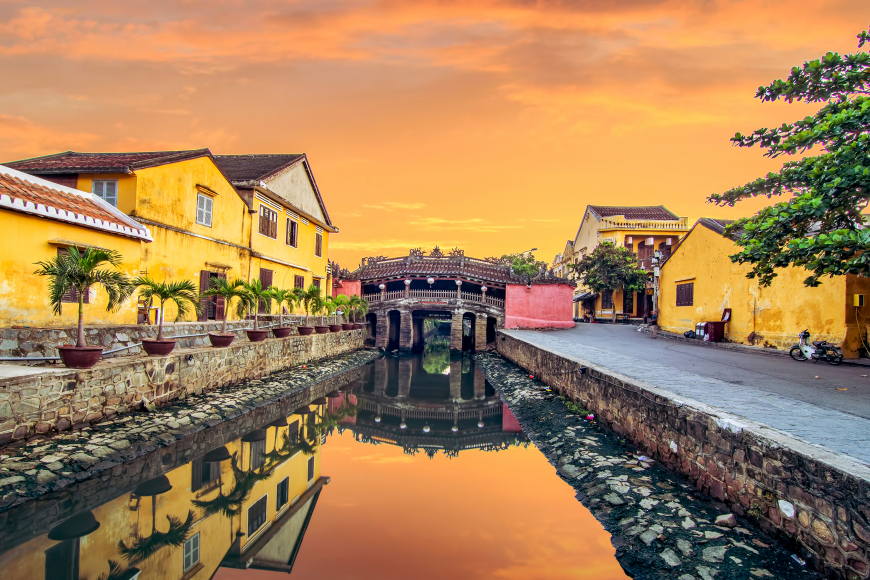
TOP TIP: An Old Town Ticket gives you access to the interior temple. Money from ticket sales goes towards preserving the bridge.
EXPLORE THE MUSEUMS
Unsurprisingly, the old quarter is full of museums that offer detailed insight into the story of this stunning town. Among these are five top attractions: the Museum of History and Culture gives a comprehensive overview, with artifacts spanning about 2,000 years; the Museum of Folklore looks at traditional crafts and includes a performance; the Museum of Sa Huỳnh Culture gives insight into the Sa Huỳnh period; the Museum of Trade Ceramics showcases pottery and ceramics; while Tan Ky Old House is a stunning example of Asian architecture and Oriental philosophy. Built in 1741, it’s been home to seven generations of one Vietnamese family and is a great example of an 18th-century merchant’s home.
TOP TIP: At Tan Ky House, look out for the stunning One Hundred Birds lacquered board. Written in 100 letters, each stroke of writing is actually an image of a bird in flight.
HEAD TO THE BEACH
Need a break from all that art and culture? A beachy break is less than 10km away. Some visitors opt to stay at a beach-side resort, venturing into the old town for day trips. The nearest and most popular beach in An Bang. There are sun loungers and umbrellas for those wanting to relax. Watersports include parasailing, jet skis, and stand-up paddleboarding. There are plenty of bars and restaurants for food and refreshments. Cua Dai Beach is where most of the resorts are. Erosion has made the beach frontage fairly narrow, but it’s still favored among locals. Hidden Beach, which lies between these two, is a quiet option. There’s a spa and restaurant for those seeking some R&R.
TOP TIP: Do as the Vietnamese do: Avoid the harsh sun during the middle of the day. Mornings should be quiet, while late afternoons and early evenings may be busy.
VISIT THE CHAM ISLANDS
For a trip within a trip, go to the Cham islands for the day or overnight. Cu Lao Cham Marine Park, a UNESCO Biosphere Reserve, consists of eight islands 15km off Hội An’s coast. Day-trippers go there for snorkeling, diving, or to enjoy one of eight beaches. But to really experience the peace and quiet of island life, book an overnight stay. The extra time will allow you to see the sleepy Bai Huong fishing village or visit one of the island’s monuments.
TOP TIP: Take a speedboat for the quickest ride there. Or go via ferry for a more leisurely and authentic journey.
